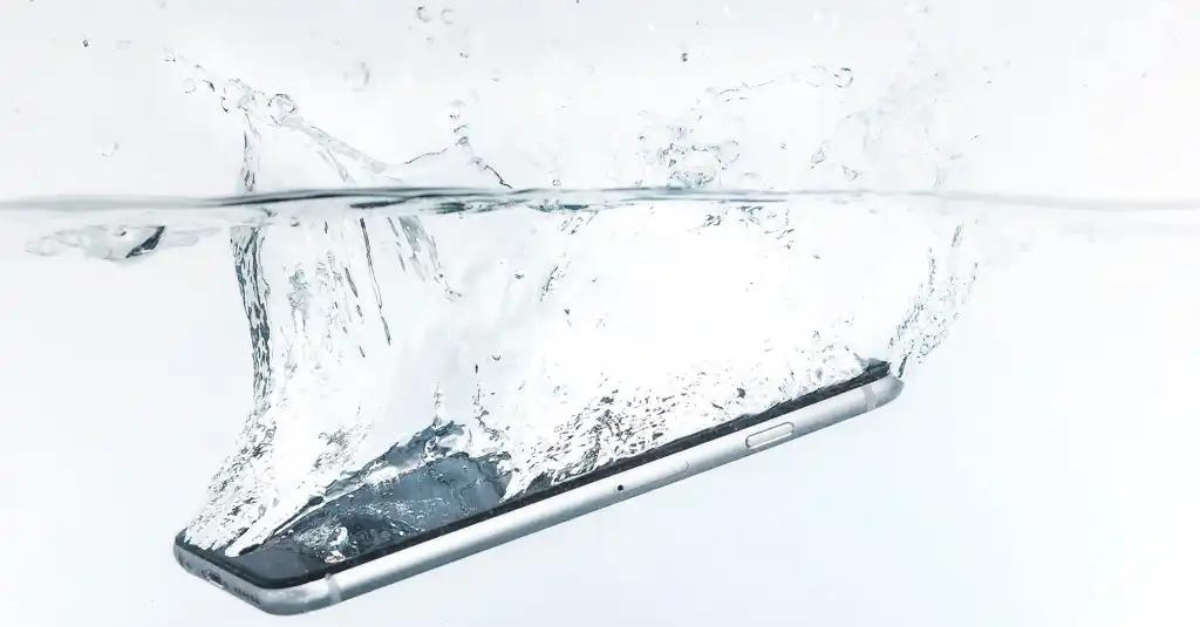There can be few more jarring experiences than watching your smartphone slip from your pocket and plunge into a bath, a drink, or even worse the toilet.
Historically, this would usually mean instant and irreparable damage, as water might short-circuit the device’s internal electronics and destroy them. Fortunately, with improvements in technology, most modern smartphones are now designed to be much more resistant to water.
Not all phones are created equally when it comes to surviving a dip, though. Here’s a detailed guide on how well your device might fare if it decides to take an unplanned swim.
Is My Phone Waterproof?
The term “waterproof” can be very misleading. It suggests a phone could be submerged indefinitely without harm, which is not the case. In reality, smartphones are designed to be water-resistant not waterproof.
Water resistance allows the device to endure contact with water up to some extent generally within stipulated conditions and durations. Excessive exposure beyond these limits can still be damaging.
How Water Resistant Is My Phone?
Water resistance is measured by something called an IP rating, short for “Ingress Protection.” This rating can often be seen on the packaging and advertisements of most modern-day smartphones. In the case of flagships, a lot of them have an IP68 rating.
The digits in an IP rating mean the following
1.The First Digit
It refers to protection against solid particles like dust. Rating 6 is the highest rating for complete protection against the ingress of dust.
2.The Second Digit
It refers to protection against liquids. A rating of 8 means it could withstand continuous immersion in water beyond one meter deep, usually up to 30 minutes.
For example, a phone at the IP68 rating should be able to handle an hour’s soak in a meter-deep water body without damage. Normally, such figures are based on fresh water. Other liquids like saltwater, sugary beverages, or pool water might be more corrosive and damaging.
Also worth mentioning is that waterproofing can actually degrade over time. Seals and gaskets that seal out the water can wear down or otherwise become compromised especially with age, or after third-party repairs.
Can a Phone Be Water-Resistant Without an IP Rating?
Some manufacturers do not obtain an IP rating; this is usually to reduce costs. Budget and mid-range phones may claim water resistance but will not specifically state their IP rating. Such ones go by the manufacturer’s assurances, as opposed to rigorous third-party testing.
If you’re going to notice a phone that has been advertised as water-resistant, without its IP rating, you should always look for the fine print or even call the manufacturer for more information before dunking it in water.
Do You Need an IP68 Rating?
It depends on the intended use that one would need an IP68 rating. The IP67 rating, also found on devices like the Google Pixel 8a, allows your phone to survive being submerged in up to one meter of water for up to 30 minutes. This level of protection is usually adequate to get you through everyday situations, such as getting drenched in the rain or spilling something on the device.
For more intense situations or if you often find yourself near water, an IP68 rating provides better protection, with deeper and longer immersion allowed.
How Does Water Damage a Phone?
Water can damage phones in a few ways:
1.Short Circuits
When water reaches electronic components, short circuits can happen, which may cause malfunction or the total shutdown of the device.
2.Corrosion
Saltwater, soap, and chlorine from various liquids can corrode internal components and damage gaskets.
3.Residue
Substances like soap and chlorine can leave residues that affect the device’s functionality.
To avoid damage, it’s best to keep your phone away from water whenever possible. Even water-resistant phones have limits .
Are iPhones Waterproof?
Recent iPhones come with varying levels of water resistance.

- iPhone 12 and Later_ With the IP68 rating, these can hang out as deep as six meters for up to 30 minutes.
- iPhone 11 Pro and Pro Max_ With an IP68 construction, it allows immersion in water as deep as four meters for 30 minutes.
- iPhone 11, XS, and XS Max_ IP68 rated for up to two meters of water depth.
- iPhone 7 and 8 Series_ Have obtained the IP67 rating that has allowed immersion in up to one meter of water for 30 minutes.
Consider reading a guide about How to take Underwater Photos with Your iPhone.
Are Samsung Phones Waterproof?
Since the Galaxy S7 and Note 8, the IP68 ratings have formed a staple across Samsung’s high-end Galaxy S and Note lines. More recently, the Galaxy Z Fold and Z Flip series also joined with the addition of IPX8 ratings, starting in the Z Fold 3 and Z Flip 3.

Some devices from the Galaxy A series, like the Galaxy A35 and A55, come with IP67 ratings. Some devices at the low end, however, like the Galaxy A15, do not have such water resistance.
Are Android Phones Waterproof?
With so many Android models out in the market, most high-end flagships now come with IP68 ratings. Similar protection is also increasingly available on mid-range phones. Knowing what to look for in terms of IP rating helps in assessing the water resistance of any phone you consider.
With such details, you will be better positioned to gauge how well your smartphone will be in withstanding an accidental encounter with water and if a device’s water resistance serves your needs well.

